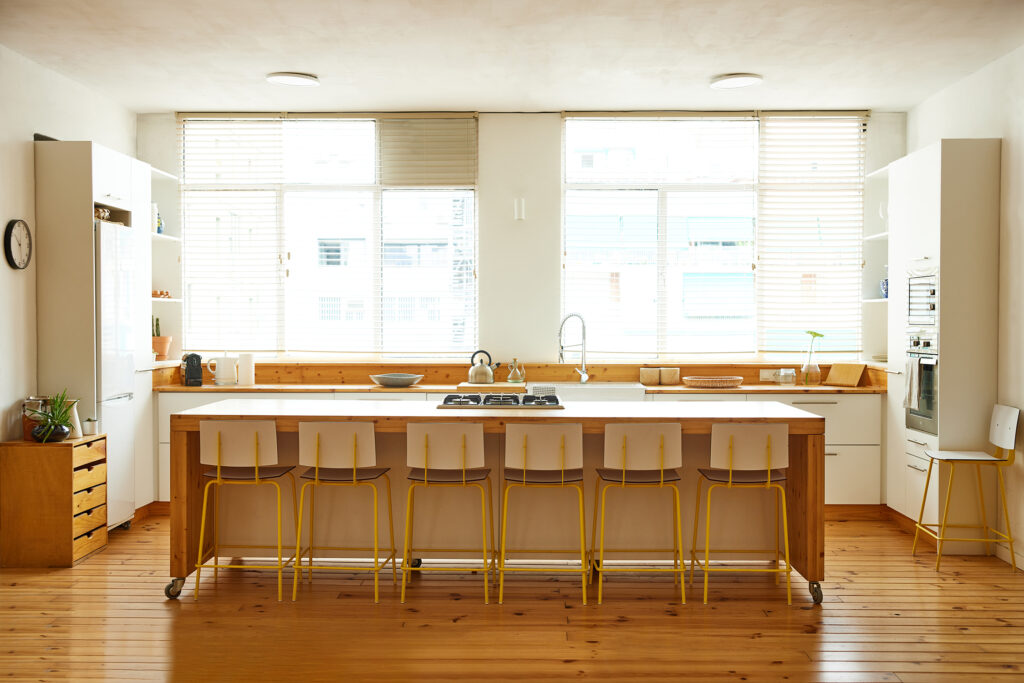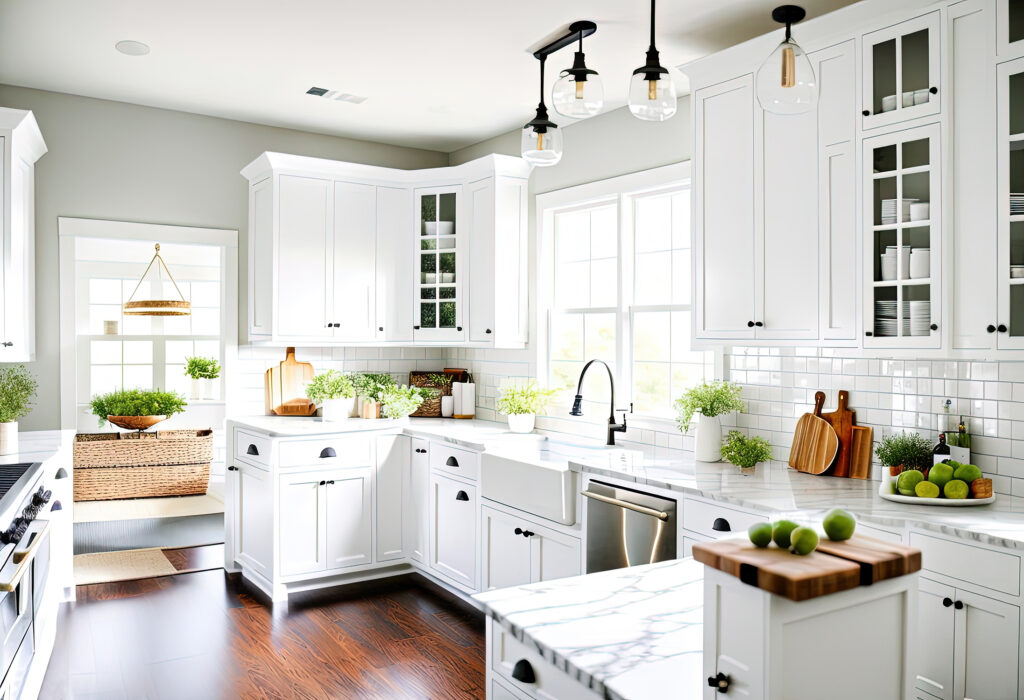It’s no secret the kitchen is the heart (and stomach) of any home, but it’s also one of the most meticulously designed rooms out there. Not only does the kitchen need to be designed to tackle meal-prep, recipes, and post-dinner cleanup, but it should also look good. But while we’ve asked plenty of interior designers for their takes on the latest kitchen trends, we couldn’t help but wonder what chefs thought. You know, the people who actually spend the bulk of their days in the kitchen.
Turns out, culinary pros say a lot of those buzzy kitchen fads are all sizzle, and no steak. “The best kitchens aren’t the ones that are biggest or have the most expensive appliances,” says Chef Julian Martinez, executive chef of Barbareño and the soon-to-open Bistro Amasa. “Rather, they are the ones that are thoughtfully designed. This includes keeping in mind the layout, having the prep space, stove, sink, fridge, and ingredient storage all within a few steps.” Below, three chefs share the kitchen trends that are totally bogus—plus their tips on creating a smart-yet-stylish space.
1. Open Shelving
Tony Anderson/Getty Images
Photogenic, open shelves might exist in whirlwind restaurants, but Chef Martinez says they’re not very practical in home kitchens. “It seems to end up going one of two ways,” he says. “Either it gets really cluttered and ends up being an eyesore, or the shelving gets filled with things that never get used, simply to preserve the look.” Chef Martinez says the latter result is the worst because it’s taking up some valuable real estate.
Instead, Chef Martinez likes to conceal his belongings in appliance garages. “These allow you to store items in an easily accessible way, as we do in professional kitchens, while maintaining a clutter-free look in daily living,” he explains. Bonus points: A discreet storage solution might empower you to pick up workhorse appliances, not the ones that simply look good on your counters.
2. Induction Stovetops

LumiNola/Getty Images
It’s not up for debate: When it comes to outfitting your kitchen, a top-of-the-line oven and stovetop are non-negotiables. That said, Chef David Yoshimura of Bar Iris and Nisei in San Francisco cannot stand induction stovetops. “I don’t know how this trend took off in the 2000s, but thank god it’s on its way out,” he says. “Chefs know the control you get with gas—it’s faster, more reliable, and far better for real cooking.” As restrictions on gas appliances continue to creep into the West Coast, an electric stovetops might be a better, eco-friendlier alternative.
3. Statement Islands

Morsa Images/Getty Images
The kitchen might, as we said, be the heart and stomach of the home, but the room’s island is the focal point. From packing your children’s lunches to enjoying a glass of wine with your friends, everything happens at the kitchen island, right? Sure, but Chef Yoshimura wishes it wasn’t that way. “Oversized center islands crammed with everything look flashy and interrupt the natural flow of cooking,” he says. Instead, Chef Yoshimura says the best kitchen layout is like a conveyor belt. “Refrigerator, to cutting board, to pan,” he explains. “I’ll take larger countertops and efficiency over a “statement island” any day.”
4. Microwave Over Stoves

Grace Cary/Getty Images
Speaking of your layout, Nicole Dragon of the Food Dragon says the worst spot to place your microwave is right above your stove. “It can be a space-saver, but it blocks ventilation, and grease and smoke end up lingering instead of getting pulled out by a proper hood,” the San Diego foodie says. “If you cook often, you’ll feel the difference fast.” She also says it’s a safety concern: After all, lifting a bowl of hot soup or melted butter above shoulder height is an “accident waiting to happen.” When possible, Dragon recommends opting for a microwave drawer.
5. Motion-Sensored Everything

Tfilm/Getty Images
At first thought, motion-sensored appliances seem like magical must-haves: WIth a simple flick of your hand, you can have an opened garbage bin, droplet of dispensed soap, or a sink faucet rushing with warm water. They might seem high-tech in theory, but chef Yoshimura says they’re more cumbersome in real life. “In practice, I’m standing there waving like a fool or tapping it like an ape because it won’t turn on,” he says. “Completely defeats the purpose.” Features with standard knobs, pedals, and covers aren’t flashy; however, they always get the job done.
6. All-White Kitchens

Cavan Images/Getty Images
All-white kitchens look beautiful on both your social media feeds and in-person—well, until you start cooking. “Every splash of tomato sauce, curry, stir fry spatter, even coffee splatters show, and you’ll end up going crazy trying to keep it spotless,” Dragon explains. The secret, she says, is to design an accessible space. “Real kitchens are meant to be cooked in, not staged like a photoshoot,” says Dragon. “A mix of textures and tones gives you warmth, durability, and is just as beautiful as that all white Instagram kitchen.”
7. Outdoor Kitchens

Eirasophie/Getty Images
Yes, you read that correctly. While an outdoor kitchen seems like the emblem of coastal living, Chef Yoshimura says they’re overhyped. “People love to show them off, but every homeowner I know eventually admits it’s more trouble than it’s worth,” he says. “Expensive, high-maintenance, and used maybe once a month.” Still want to whip up a fancy feast al fresco? Chef Yoshimura says to ditch the fancy setup and spring for a great grill.

